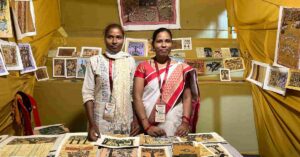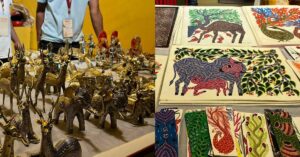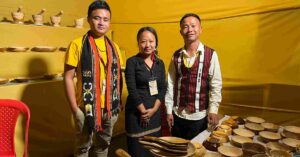Nine Yards of Self: One Woman’s Crusade to Bring Back the Draping Culture in India
The saree is quintessential Indian attire, and has a long and illustrious history– and Nikaytaa is at the helm of popularising the art of the perfect drape!

There are about a little over a hundred recorded drapes of the saree across the length and breadth of India. Wikipedia lists about 14. Nowadays we mostly see the nivi drape – the contemporary drape with the pallu on the side and the pleats at the centre.
The nivi drape remains popular today because it is an example of adapting the saree to give it an easy, feminine appeal. The style was popularised by Gyanodanondinee (Jnanadanandini) Devi Tagore, a pioneer in the women’s empowerment movement in Bengal.
However, in our current times, the saree has been pushed further back into the recesses of women’s wardrobes.
Nikaytaa, a young impact assessment entrepreneur from Pune, is trying to change exactly that!
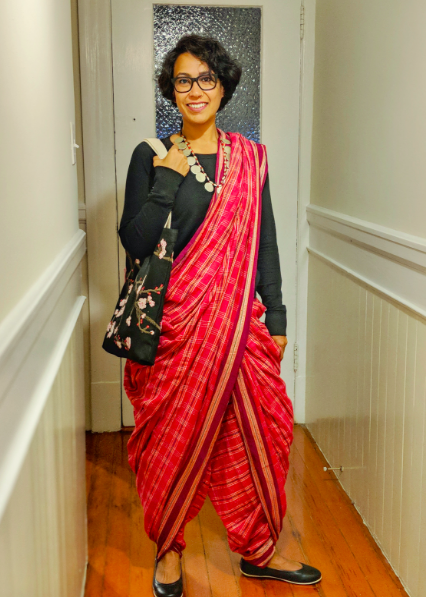
“The nivi drape is only a hundred years old!” she tells us excitedly, in the Goa chapter of her ‘Dare to Drape’ workshops.
Her workshops, under the Indian Draping company, typically last three-four hours and give you a glimpse into the history of the garment, alongside teaching you at least six different draping styles.
Dressed in a hand-woven Kunbi saree herself, knotted above the left shoulder in a typically Kunbi drape, Nikaytaa passes around sarees from various regions, pointing out how the fabric and patterns on each differ to accommodate for the climatic conditions and the folklore of the region.
A key focus of these workshops is to get people acclimatised to the idea of a saree as a regular garment – not one to be savoured only during special occasions, as it has become for a vast majority of the urban youth today.
Nikaytaa realised that to bring back the culture of wearing sarees among this group; one has to start with the basics.
You may also like: This Couple Found a ₹25k Saree on a Footpath, and Had an Amazing Response!
In ancient India, saree was essentially a functional garment. Tribal women wore it tied high up to their knees so that it would not get stuck in the shrubs while they were out collecting firewood. Fisherwomen in coastal India wore it like a pair of shorts to allow them easy movement in the water.
However, as the garment lost its functional element and shifted towards pure aesthetics, it lost its appeal among young women, who instead opted for easier garments like pants and skirts.
Trying to revive this lost art of draping, Nikaytaa wants to make sarees a less daunting garment for the Indian youth. Indeed, she teaches you ways to drape the saree both like a pant and a skirt! In fact, a key ethos of the Indian Draping Company is “a process to understand the cultural influences of the past and infuse them with modern sensibilities”.
Nikaytaa’s story starts like most of us – growing up watching mothers drape a saree at home, which was eventually reduced to the occasional garment reserved for farewells and reunions. Nikaytaa faced the full implications of this lack of knowledge when she married into a Bengali household in 2016.
To save herself the social embarrassment of having to ask for help every time she needed to wear a saree, she began a 14-day challenge to wear a saree each day.
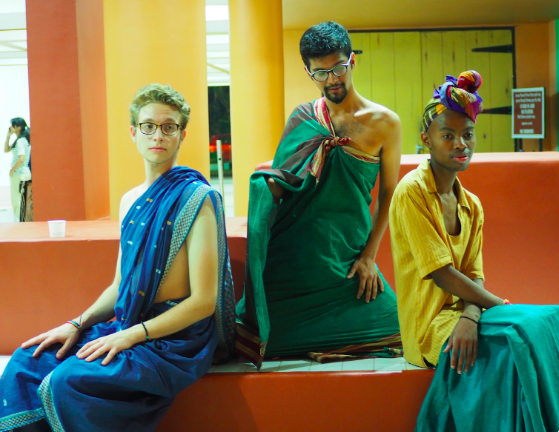
Soon enough, she mastered the standard nivi drape, and began researching the various styles worn across the country. Marvelled by the variety and the ease of access, she soon started to wear them everywhere – from work to an evening out with friends! Her relentless research soon got her at one of the saree school workshops by Rta Kapur Chisti, researcher and author of ‘Sarees of India’ – one of the most comprehensive books on the history and evolution of the garment in India.
From there on, life stretched into the nine yards for Nikaytaa. Drawing resolve and inspiration from Rta Kapur Chisti, she got together with some friends and organised a show, with various women sporting different draping styles.
“I noticed how the three weeks of draping, where we customised our styles, and the subsequent show, brought about a sharp increase in their self-worth and self-confidence levels.”
The show opened up several new dimensions; She realised that “Each draping style is an assertion of self-expression. While one style can make you feel at your sensual best, another is designed to not stand out in a crowd.”
We realised her words ourselves, in the second half of the workshop, where she moved around helping each of us drape different styles. Soon enough many of the participants began to customise the drapes – while I draped the pallu to look like a halter dress, a fellow attendee, a middle-aged theatre teacher draped the pallu around her waist, with an additional half fall, adding to her grace and poise.
While the exercise itself was fun, it also was a reflection of our personalities and preferences. “An exercise in self-assertion”, she smiled.
For Nikaytaa, the draping workshops are more than just a passion – it is a personal revolution of sorts – one that has allowed her to discover a more resplendent and aware self, while also allowing her to take a step towards sustainable fashion.
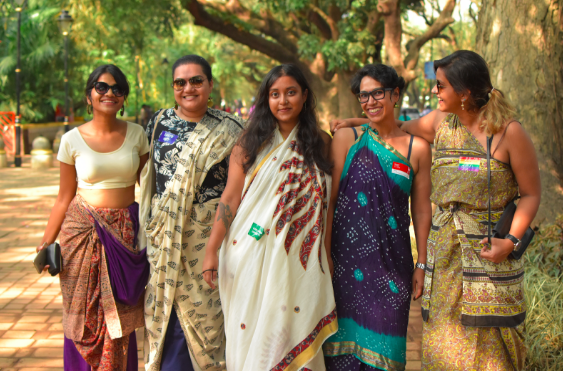
She recounts how on one occasion she wore the same saree consecutively for three days, and no-one noticed because each time it was draped differently. Minimalism is what she is working towards, both as a personal and a cultural crusade.
And while she has been travelling with the workshops, the Goa chapter has opened up a new facet in her ongoing research on the timeless garment – the aspect of gender fluidity attached to the clothing.
She marvels at how popular culture has conditioned us to look upon the saree as a female garment, though originally it was worn by both men and women.
“It is appalling how the garment has been reduced to a symbol of femininity and conditioned us to make assumptions about those wearing it. In Goa, I’ve encountered a whole group of men, who make no such assumptions and have no qualms draping one. I have become so much more aware of my biases and am working on it each day!”
(Written by Aishwarya Guha and edited by Vinayak Hegde)
Like this story? Or have something to share?
Write to us: [email protected]
Connect with us on Facebook and Twitter.
NEW: Click here to get positive news on WhatsApp!
This story made me
- 97
- 121
- 89
- 167
Tell Us More
We bring stories straight from the heart of India, to inspire millions and create a wave of impact. Our positive movement is growing bigger everyday, and we would love for you to join it.
Please contribute whatever you can, every little penny helps our team in bringing you more stories that support dreams and spread hope.






